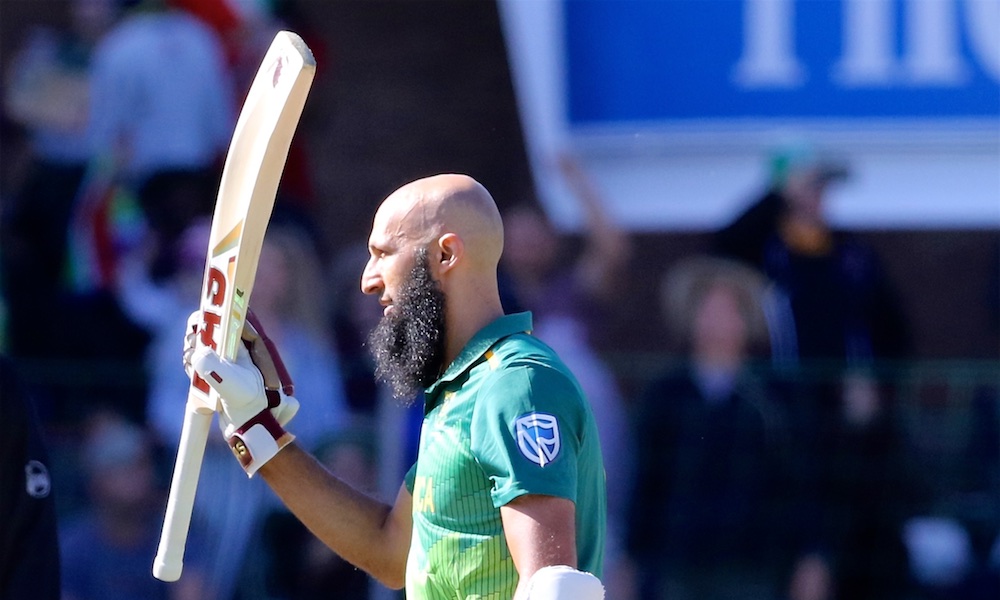Hashim Amla’s timely return to form ahead of the World Cup opener against England is a much-needed shot in the arm for the Proteas, writes JOHN GOLIATH.
Two half-centuries in the two warm-up matches is just what the doctor ordered for the great Amla. It wasn’t a matter of how many runs he scored, but how confident he looked at the crease, especially in the rain-affected match against the West Indies in Britsol, where he freed his arms up quite a bit.
He struck the ball well in both matches, with those crisp square drives on the up in the first match against Sri Lanka in Cardiff as an appropriate reminder that his broad bat has still lots of runs in it.
Amla’s form is crucial for the Proteas, because he is the glue that’s needed to keep their batting efforts together, especially in a tournament such as the World Cup, where South Africa have made a habit of capitulating under pressure with the willow in hand.
However, it’s going to take a team effort on the batting front if the Proteas are going to win the tournament.
In 1999 the Proteas fell short by one run (I know Allan Donald didn’t run…) because of a middle-order collapse, while in the rain-affected match at the 2003 edition in Durban, the Proteas also lost wickets at crucial stages and got nailed by the Duckworth-Lewis system.
In 2007 in the Caribbean, the Proteas’ batting lineup suffered one brain explosion after the other against Australia, and four years later they couldn’t chase a modest target against New Zealand in the quarter-final on the subcontinent. Faf du Plessis, running out his good mate AB de Villiers in that match basically sums up South Africa’s World Cup challenges.
It’s quite clear, the Proteas need their experienced anchor to play his game, so that those around him can flourish. This South African batting lineup has enough talent and variety to actually back up the team’s much-vaunted bowling lineup.
The South Africans’ batting lineup is laced with experienced stroke players who can play their natural game as long as Amla goes along at a strike rate of over 85. Players such as Quinton de Kock, Faf du Plessis and Rassie van der Dussen can change gears in an instant, while David Miller and JP Duminy, as well as the all-rounders, can do some damage at the end of an innings.
The other batsmen can afford to take the odd risk or two, because this is likely to be a high-scoring World Cup.
It’s a potent mix on paper. But not to sound like a cliché, the game is played on grass. There are lots of mental scars still to overcome. But why not this year? Especially if Amla is leading the way.
Scores of 300 may not be par at this World Cup, as teams may be targeting the 350-mark. The pitches seem to be good for batting, while there hasn’t been a lot seam and swing. Because two balls are used per innings, there isn’t going to be any reverse swing either.
Spin may come into play, but players have been targeting the tweakers, and haven’t allowed them to settle in the warm-up matches. It’s going to be interesting to see if the teams adopt the same approach during the tournament proper.
The Proteas’ batting isn’t as big a weakness as people think, but history certainly does play a part when you consider what they need to do to back up the likes of Kagiso Rabada, Lungi Ngidi and Imran Tahir.
It’s not impossible, though. It’s time for all of South Africa’s batters to stand up and be counted. The bowlers alone aren’t going to win the World Cup.
Photo: Richard Huggard/Gallo Images







